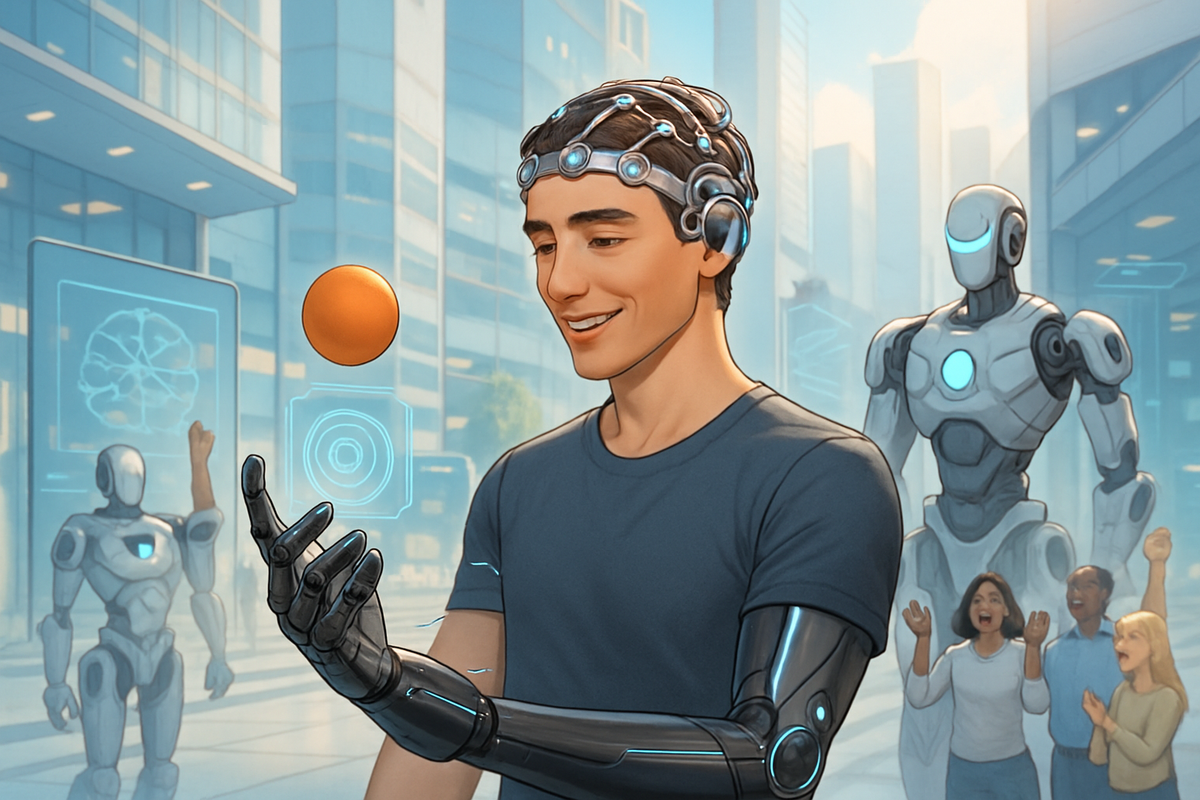The Next Human Upgrade: How Bionics, AI, and Robotics Are Redefining Disability and Superhuman Potential
Discover how bionics and AI are not just restoring abilities but redefining humanity—blurring lines between disability and superhuman. Are you ready to embrace the upgrade and join the future of human potential?

Welcome to the Bionic Age: From Restoring Ability to Unlocking Superpowers
Picture this: A child high-fives their friend with a 3D-printed bionic arm. An athlete with a robotic leg runs faster than their former biological self. A person paralyzed from the neck down controls a robotic hand—feeling every touch, every squeeze—using only their thoughts. This isn’t science fiction. It’s the new dawn of human augmentation, where bionics, AI, and robotics are not just restoring lost abilities, but boldly redefining what it means to be human.
“Disability is no longer a limit—it’s a launchpad for innovation. The next upgrade isn’t just about fixing; it’s about transcending.”
Bionics: From Prosthetics to Superhuman Tools
Prosthetics have come a long way from wooden pegs and pirate hooks. Enter Open Bionics, the UK-based pioneers making 3D-printed bionic arms that don’t just mimic the human hand—they outperform it. Their Hero Arm (and the newly launched Hero Pro & Hero RGD) feature:
- Custom 3D-printed fit for each user
- Biofeedback vibrations for real-time sensation
- Multiple grip types, wrist rotation, and modular covers (hello, superhero aesthetics!)
- Wireless, waterproof, and can even function detached from the wearer
Open Bionics isn’t just in the lab—they’re opening clinics in major U.S. cities, bringing high-tech hope to thousands of amputees and war survivors. Their mission? To make bionic limbs as accessible as smartphones—and just as cool.
Real People, Real Superpowers
From children inspired by Star Wars prosthetics to Ukrainian soldiers returning to the frontlines with bionic arms, these stories are reshaping our collective narrative. Disability is no longer just a medical issue—it's a creative frontier.
AI & Neurotechnology: The Brain’s New Playground
But why stop at hardware? The next leap is mind-controlled bionics. In January 2025, a University of Chicago study made headlines by delivering a realistic sense of touch to people operating robotic hands via brain signals. Participants with spinal cord injuries had electrodes implanted in their sensory and motor regions. The result? They could control a bionic limb with their thoughts—and feel what it touched.
- AI decodes brain signals for nuanced, intuitive control
- Neurofeedback closes the loop—users sense pressure, texture, even temperature
- This breakthrough blurs the line between man and machine, body and technology
“Imagine a world where the mind can command not just arms and legs, but digital avatars and smart homes—instantly. We’re not just fixing bodies; we’re redefining agency.”
Robotics: Precision, Safety, and the Rise of Medical Cyborgs
Robotics aren’t just for sci-fi villains anymore. They’re helping surgeons place dental implants with pinpoint accuracy, automating delicate surgeries, and even restoring mobility for stroke survivors. The rise of surgical robots means fewer errors, faster recovery, and a new breed of “medical cyborgs” who blend biology and technology seamlessly.
From Restorative to Enhancement: The Superhuman Debate
Here’s where things get spicy. As bionics and neurotech move beyond therapy, we’re forced to ask: When does restoration become enhancement? Should anyone be able to upgrade their body, even if they’re not disabled? Will we see a future where “superhuman” is the new normal?
- The upside: Greater independence, creativity, and equality for people with disabilities
- The wild card: Competitive athletes, artists, even CEOs seeking bionic upgrades for performance
- The ethical maze: Who gets access? Who pays? Do we risk a new kind of digital divide?
Identity in the Age of Augmentation
These questions aren’t just for ethicists—they’re for all of us. As our bodies become customizable, what does it mean to be “human”? Is your bionic hand any less you than your biological one? Are you still ‘you’ if part of your brain is cloud-connected?
“The future of humanity isn’t about choosing between biology and technology—it’s about weaving them together in ways that empower everyone.”
The Road Ahead: What’s Next for Human Potential?
The bionic revolution is just getting started. Expect:
- Affordable, personalized bionic limbs for all ages and abilities
- Brain-computer interfaces that let you control devices with a thought
- AI-driven prosthetics that learn and adapt to your lifestyle
- Robotic exoskeletons for work, play, and rehabilitation
- And, perhaps, new forms of art, sport, and self-expression only possible with augmented bodies
Want to join the conversation? At FUNAiX, only subscribers can write and read blog comments—so don’t miss your chance to swap ideas, debate the ethics, and help shape the future. Subscribing is free (for now), so why not upgrade your inbox too?
Final Thoughts: Embracing the Upgrade—With Wisdom and Wonder
The line between disability and superhuman is fading fast. Whether you’re an innovator, a dreamer, or simply curious about what’s next, the message is clear: The future isn’t just happening to us—it’s being built by us.
So, are you ready to embrace your inner cyborg? Or at least, to cheer on the humans who do? The next upgrade is here—and it’s powered by courage, creativity, and a dash of good old-fashioned curiosity.
Love this kind of smart, adventurous reporting? Subscribe now to become a FUNAiX Insider—it's free, it's easy, and it unlocks the best tech conversations on the web.




